- Home
- Injections
- Laser Treatments
- Specialties
Specialtiesview all
- Other Treatments
- Before After Photos
Before After Photosview all
- Contact Us
- Doctor And Staff
- About Celibre
- Blogs
Have you been considering laser treatments to improve your lines and wrinkles? Because of the hype in our industry, you may be surprised to learn that not all lasers treat lines and wrinkles effectively. We’re here to help you make sense of your laser options for smoother, tighter, firmer and younger skin. We’ll explain their similarities and differences as well as discuss why certain treatments might make more sense for you versus others that your friends or family members may have had.
First, it’s important for you to understand that there are two primary laser technologies proven superior for improving skin’s texture and laxity: CO2 and erbium. Many different companies produce lasers using these two energy. While similar, these types of lasers do have subtle differences.
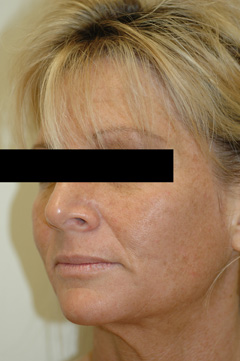
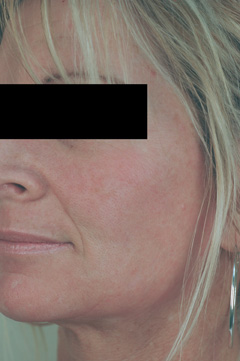
Fractional Laser Resurfacing
So, which one would be the choice for you? The answer really depends on your goals. Are you a 35-year-old who just wants a bit of smoothing and brightening? Or are you a 65-year-old who has smoked and sunbathed for the past 40 years? As you might guess, these two patients will require different laser resurfacing treatments.
More aggressive treatments (for more severe damage) will require more recovery time. The longest downtime is usually following fully ablative CO2 resurfacing. These patients will need 2 to 4 weeks for recovery. Other non-ablative resurfacing procedures (with less dramatic results) carry no downtime at all! Keep in mind that more aggressive treatments are usually a “one and done” type approach. No downtime procedures may require a series of treatments.
So how do these treatments work to smooth your skin and erase lines and wrinkles? Lasers use thermal (heat) energy to injure your skin. This precise injury forces your body to make new collagen. As your skin heals and new collagen forms, you see tighter, firmer skin.
In addition to CO2 and erbium, radio frequency treatments have also been developed to tighten skin. While the mechanism by which these work is different than lasers, the underlying “collagen remodeling” is the end result.
Just as technologies have evolved, so has our approach to laser resurfacing. Twenty years ago, full CO2 resurfacing was the only way to get younger, fresher-looking skin. The recovery times were long, and often complications occurred including permanent color changes and scarring. In 2005, the first “fractional” treatment was introduced. This technology allowed for “only a fraction” of the skin to be treated with the laser, rather than the entire skin surface. Not only did this reduce recovery time (to about a week) and complications, but the results were similar to traditional CO2 resurfacing. Today, fractional laser resurfacing is the preferred method to rejuvenate skin.
Fractional resurfacing treatments are excellent for improving fine lines under the eyes, smoker’s lines at the top lip, and crow’s feet at the sides of the eyes.
Too often consumers become focused on a specific laser done because they saw it on The Doctors or Dr. Oz. Instead of focusing on a particular brand of laser, we suggest evaluating the practitioner using the laser. Look at before and after photos of patients with similar issues as yours and examine the results that your potential practitioner gets with the lasers they use.
Choosing a laser resurfacing treatment can be a daunting process, but with the help of a knowledgeable and skilled practitioner and a good understanding of the goals and limitations of the procedure, you can find the perfect fit for you. Call us today for your free consultation.
When you think about anti-aging treatments, you might think first about procedures to help your face look smoother, fuller, firmer and less wrinkled. But your face isn’t the only indicator of your age. In fact, many of our patients who’ve had effective facial rejuvenation come to us asking about other areas that they feel don’t “match” their face or give away their age. One of these areas is their hands.
Your hands are exposed to view every day. Depending on your profession or daily activities, they may draw more attention or even take center stage over your face! One of the most frequent complaints about aging hands are prominent, “ropey” looking veins on the backs of the hands. While there’s no great preventative treatment for this, there are effective ways to improve it.
Asclera is an injectable product that can be carefully injected into unwanted veins on the hands. It causes the treated vein to harden or “sclerose” and this triggers the process of the vein being slowly broken down and removed naturally by your body. The treatment is called sclerotherapy. If you’re thinking, “I thought that was a treatment for spider veins on the legs?” you’re right! It’s the same exact process, and it works just as effectively for unwanted veins on your hands.
This treatment is ideal for smaller veins, so if you still have larger ones that you don’t like, sometimes we can couple sclerotherapy with dermal filler treatments of Radiesse. Radiesse helps to add back fullness to the backs of the hands. This can be an effective camouflage for larger veins. It also helps your hands look fuller, softer and smoother.
Don’t let your hands spoil your age. There are effective anti-aging solutions for your hands and we can help you decide which one is right for you!
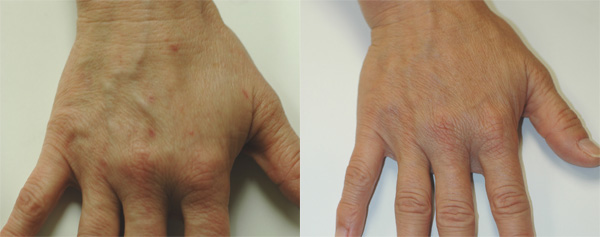
Nevi is the fancy, medical term for “moles”. Most of us have at least a few moles on our skin. Chances are that no two of yours look the same, because nevi come in a variety of sizes, shapes, colors and textures!
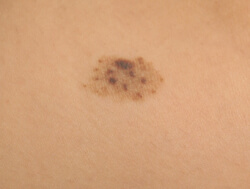
 One type of birthmark is a “speckled nevi”. These look like large, flat light brown patches with lots of darker, freckles within them. Sometimes they may fade during the winter and get darker in the summer or with sun exposure. If you run your fingers over the surface, they may feel a bit like sandpaper. If you’ve got one and you wish you didn’t, class IV medical lasers may be able to help.
One type of birthmark is a “speckled nevi”. These look like large, flat light brown patches with lots of darker, freckles within them. Sometimes they may fade during the winter and get darker in the summer or with sun exposure. If you run your fingers over the surface, they may feel a bit like sandpaper. If you’ve got one and you wish you didn’t, class IV medical lasers may be able to help.
Laser treatments for brown birthmarks isn’t always a sure thing. While many fade significantly, others don’t. We tell this to our patients up front and set their expectation for improvement in appearance and not necessarily total Removal. At Celibre Medical, we’ve had good success treating these types of birthmarks (and others) with q-switched laser technology. Q-switch lasers are safe for most skin types (colors) and they will often fade the brown pigment of speckled nevi birthmarks, while leaving the dark freckles behind.
While laser treatment of these birthmark can be challenging, we’ve found that by thoroughly discussing the ins and outs of treatment and results up front with our patients, they are very happy with their results.
Have you had freckles your whole life? Or maybe you have a darker skin type or a long history of sun exposure and you’ve noticed small brown spots popping up everywhere? Whatever you call them – sun spots, freckles, birthmarks or brown spots—there’s a good chance that you have a few that you wish you didn’t. One uncommon place for these spots is the lips. No one is happy with attention-drawing discoloration on such a highly visible area as the mouth! If you’re a woman trying to hide these, your lipstick shades are limited to the very dark end of the spectrum. And lip gloss is completely out of the question!
Many people worry that these spots are a sign of something bad, but in most cases they’re harmless. And if you’ve wondered about laser removal of brown spots on a sensitive area like the lips, you’ve landed on the right page! Lasers can safely and effectively remove dark spots from anywhere on the body, even the sensitive mucosa of the lips. The specific type of laser that we use at Celibre Medical Corporation for this treatment is the q-switched YAG laser.
The q-switched YAG laser is safe to use on anyone, regardless of their skin type or color. Treatments for brown spots on the lips are usually quick and relatively painless. Best of all, there is no downtime! Most people see improvement after just a single treatment and many get complete results after three!
Don’t struggle trying to cover up unwanted dark brown spots on your lips. Lasers offer you a unique, effective and safe solution!
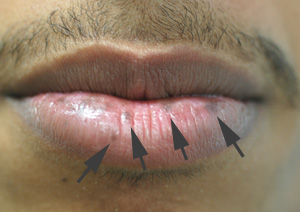

Sun Spot Removal Before and After Pictures
After laser brown spot removal, consider wearing lip protection that has SPF (sun protection factor) in it if you spend a lot of time outdoors.
There are several types of birthmarks – red birthmarks are vascular (made up of small blood vessels at the surface of the skin) and brown birthmarks that are made up of melanin (the skin’s natural pigmentation) that is darker than the surrounding skin. In addition, birthmarks come in a variety of sizes and density of pigment.
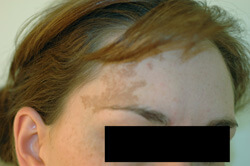
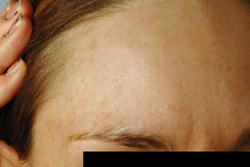 Although most birthmarks are effectively treated with class IV medical lasers, it is difficult to predict the number of laser treatments that are required for birthmark removal. The realistic expectation that we set for patients is that they have to be prepared for only improvement or fading rather than just complete resolution. In some cases we can get complete birthmark removal, but even in those cases, there is a possibility that at some time in the future, more laser treatments will be required if the birthmark reappears.
Although most birthmarks are effectively treated with class IV medical lasers, it is difficult to predict the number of laser treatments that are required for birthmark removal. The realistic expectation that we set for patients is that they have to be prepared for only improvement or fading rather than just complete resolution. In some cases we can get complete birthmark removal, but even in those cases, there is a possibility that at some time in the future, more laser treatments will be required if the birthmark reappears.
Although many birthmarks may resolve completely, it is impossible to predict which ones and with how many laser treatments. Most birthmark removal patients see good progress after three (3) aggressive laser treatments. After three treatments, if the patient is not making progress with their laser birthmark removal program, we sometimes advise them to stop because not every birthmark will respond to lasers. Most treatments do not involve any downtime, and laser treatments for birthmarks are usually less than 30 minutes.
There are so many different lasers for skin resurfacing that you might wonder which one would be good for you? At Celibre Medical Corporation, the technology that we’ve found to offer superior safety and results with our patients is the erbium YAG laser.
Erbium is an older technology, but it works, and we know that it can provide consistent benefits with little risk for our patients. It’s a great procedure to consider if you have fine lines and wrinkles, acne scarring, or if you just want to improve the laxity and firmness of your skin.
Erbium laser resurfacing does this in two ways. First, it removes the outer skin layer (the epidermis) while it simultaneously deposits heat deeper in the skin (the dermis) to stimulate collagen production. When combined with the new epidermis that is generated after treatment, erbium laser resurfacing can produce brighter, tighter, healthier and younger looking skin!
You will most likely need more than one treatment spaced at least four weeks apart to achieve optimal results. If you work or have other commitments, you will also need some “social downtime” or recovery period. This “downtime” lasts around 5 to 10 days following each treatment. There is very little discomfort during your healing period, and most patients return to their normal schedules about five to seven days after treatment!


Laser Resurfacing Before and After Pictures
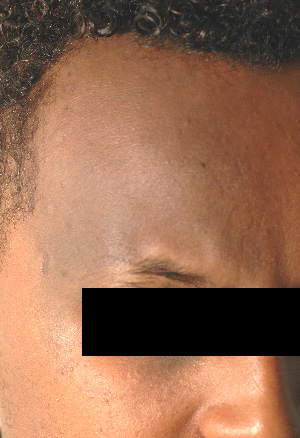
If you have a Nevus of Ota birthmark, then it’s possible you’ve considered laser treatment to remove it. These greenish, bluish birthmarks typically appear on the face and can be difficult to hide. If you have or are considering removing your Nevus of Ota birthmark, q-switched laser treatments are an excellent option.
Nevus of Ota birthmarks can appear green, grey or blue because the excess pigment is located deep within the second layer of skin. Laser light works to remove these birthmarks by penetrating deep into the skin to reach the target. The type of laser light used to target this pigmentation is called q-switched.
Although q-switched lasers work very well to clear these birthmarks, sometimes, we can only achieve partial clearance. Having realistic expectations for your treatment is key to a positive experience with laser treatments.
If you’ve decided that now is the time to remove your nevus of Ota birthmark, call Celibre Medical today for your FREE consultation to learn more about q-switched laser treatment options.
If you have a tattoo or permanent make-up, you may be surprised to learn that a laser can remove either. In fact, the same type of laser (q-switched lasers) can tackle the job of removing tattoos or permanent makeup.
Even though permanent makeup and tattoos are similar, the removal process is often different. Even though the same laser can be used to remove them, a critical understanding of these two different treatments is necessary if you are going to have successful and safe removal.

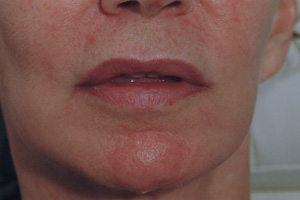
The first difference between tattoos and permanent makeup is the ink that is used. Tattoo ink is much higher quality and heartier than that used in permanent makeup. It might sound backwards, but think of it this way: a tattoo is meant to last your whole life; permanent makeup, on the other hand, can fade significantly through the years. Most permanent makeup artists will tell you that you can expect an average of five years before further work is needed. This is because the ink that’s used is inherently more fragile and a lower quality. For this reason, permanent makeup is generally easier to remove with a laser.
Next, consider the tattooing process. Many layers of ink are deposited into the skin to create a design, picture or word. Permanent makeup may involve a bit of layering, but nothing compared to a tattoo. How does this relate to laser removal? Well, the thicker the ink, the more laser passes (and treatments) it takes to break it up. Again, permanent makeup usually fades faster and with fewer treatments than a tattoo.
The last major difference is the way the two behave during the laser removal treatment process. Because of the nature of the ink that’s used in permanent makeup, it can (and sometimes does) “oxidize” after laser treatment. This makes it turn different colors. Tattoos don’t do this.
This fact can change the number of laser treatments you will need to get rid of your permanent makeup. Usually, it will make the entire process longer. It may also cause you to hide the permanent makeup. Which can change new shades of orange, pale blue or dark grey. While penciling over eyebrows to hide the ink might be a pain in the short term, rest assured the ink will completely fade away with laser treatments no matter what color it turns!
In summary, it’s important that you don’t expect the process of tattoo removal to be the same for your permanent makeup and vice versa. While the differences between the two are subtle, it’s important for your overall success that you understand them fully.
It’s often said that an ounce of prevention is worth a pound of cure. This is especially true when it comes to our health. However, this idea becomes even more critical when you have a family history of a condition.
While spider veins aren’t especially dangerous, they can have a severe impact on your quality of life, and they often tend to run “in the family”. Spider veins (and varicose veins) can be painful—both physically and psychologically. They can affect your activities and your self-esteem. But there are things that you can do to prevent spider veins. Before we discuss specific strategies, it’s important to review why spider veins happen in the first place.
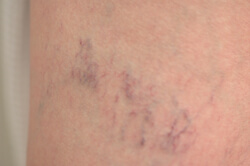
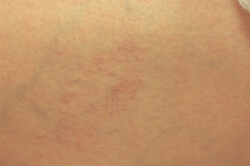
Spider Vein Treatment Before and After Picture
Our leg veins are designed to take blood back up to the heart by using a series of valves that channel the blood in a one-way direction. When some of these valves fail, blood moves backward in the wrong direction. This causes the small surface veins to dilate with blood and makes them visible as blue, purple or reddish vessels or mats of fine vessels. Factors such as weight, pregnancy, blood pressure and overall general health can contribute to developing faulty valves, but most of the time the tendency to have faulty valves comes down to hereditary factors.
Now, how can we prevent them? First, spider veins tend to be worse and occur more often if you have a job that requires you to sit or stand for extended periods of time. While you might think there’s no way of changing your working conditions, there are things that you can do while you’re sitting or standing to help keep the blood flow moving in the right direction. Ankle pumps are as simple as flexing the foot up towards the shin and then back down towards the floor. This heel-toe action stimulates the calf muscles, helping to keep the blood in the leg veins moving in and up.
If you stand on the job, do some tip-toe raises every so often to stimulate the calf muscles. Remember your movements affect the proper movement of blood in the venous system. The more sedentary or still you are, the more likely those leaky valves will leak!
Next, consider wearing support hose. These are constrictive “socks” that can reinforce and enhance the work of the muscles in the lower legs. It’s important to note that these are so much more than just “tight” socks. They are specially designed with graded levels of support. They are considered medical devices by some insurance companies and will sometimes be covered by or paid in part by your insurance if prescribed by your practitioner. Never wear restrictive clothing in place of support hose. This can do more harm than good and trigger more types of problems. Also remember not to wear your support hose when sleeping unless you’re directed to do so by your practitioner.
Third, if you sleep with a pillow under your knees to help your lower back, consider turning it from horizontal to vertical. While sleeping, the edge of a firm pillow may place pressure on the larger vein in the back of the thigh and cause congestion in the lower leg veins. Turning the pillow the other way helps take the pressure off the middle part of the back of your thigh.
Next, ask your primary practitioner if there are any medications that you’re taking that may predispose you to developing spider veins. Some prescriptions like oral contraceptives can contribute to the formation of spider veins, so make sure to ask if this is a concern for you.
Last, but not least, exercise every day. This is so important to your overall health. Stimulating your muscles and heart with regular exercise will keep your body functioning at its very best. It also greatly improves the blood flow in the legs which helps dramatically lower your risk of developing varicose and spider veins.
If you’ve grown out of your freckles and wish there was a way to get rid of them, we have good news for you: there is! Class IV medical lasers can safely and effectively remove freckles for anyone with any skin type (color).
Freckles typically develop in response to sun exposure. This is because ultraviolet light (UV) stimulates the pigment cells in your skin to make more pigment, or melanin. A freckle is essentially a little, concentrated spot of melanin. Q-switched lasers are highly effective at targeting melanin. Because the freckle is a concentrated target, almost all the laser energy is focused right where we want it, and freckles usually disappear quickly—even after a single treatment!
Remember, you should protect your skin with sunscreen after you’ve had q-switched laser treatment for freckles, otherwise you’ll just get more! This means using a good quality, broad spectrum sunscreen on all sun exposed skin each and every day!
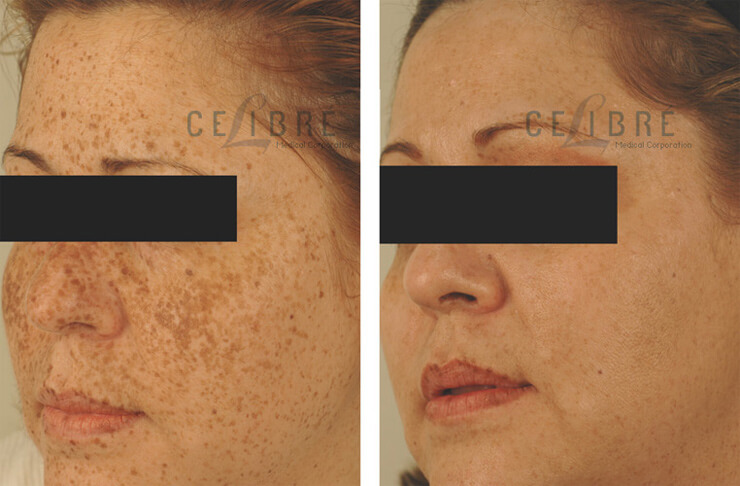
If your eyes are “seeing” their age, it may be time to consider doing something to give yourself a more youthful, rested and refreshed appearance. Eye surgery? Not always. If you’re a good candidate, laser resurfacing can take years off your appearance with minimal downtime.
The answer is a procedure known as fractional laser resurfacing. Fractional resurfacing means that only a “fraction” of the skin is treated with the laser. Hundreds or thousands of precise perforations in the skin are produced during the procedure. Resurfacing a fraction of the skin allows it to heal more quickly than with traditional full field resurfacing. Fractional resurfacing also reduces the risk of scarring, color changes (hypo or hyperpigmentation) and infections.
The brilliance of fractional laser resurfacing is that compared to full field (100%) resurfacing, the results are similar and offer dramatic reduction in wrinkles, scarring, pigmentation and pore size over a series of treatments. This all happens due to the production of new collagen. After fractional resurfacing, your skin looks tighter, firmer and more radiant.
Recent advances in fractional technology have given us a few options to choose from when considering which laser to use for this procedure. Today’s devices can create thermal or heat energy, referred to as “coagulation”, which can reach the deepest layers of the dermis during fractional resurfacing.
Before fractional resurfacing, only those with lighter skin types could undergo these procedures. Now, thanks to new lasers, anyone can enjoy the benefits of fractional laser resurfacing—even African-Americans.
Sounds too good to be true? Look at the amazing before and after photos below. This patient saw an incredible transformation from fractional laser resurfacing around the eyes. At Celibre Medical, we use the latest technology that encompasses coagulation and customization of the fractional pattern (amount of treated skin) to give you the most significant improvements in the fewest number of treatments.
If you’d like to learn more, please call us to schedule your free consultation.
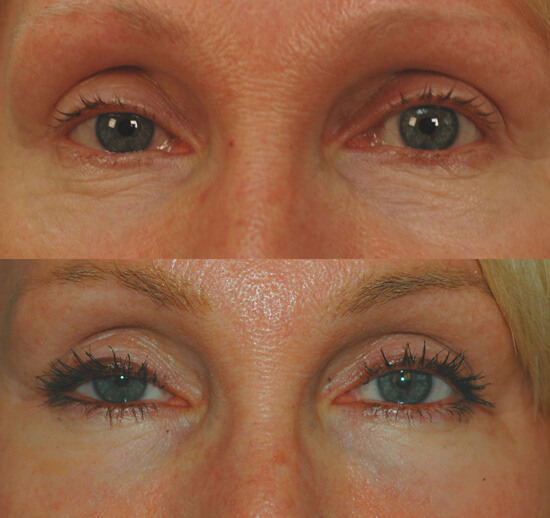
If you’re thinking about getting laser hair removal, we’re excited for you! It’s a great procedure that will literally change your life on a day-to-day basis! Being free from the embarrassment of unwanted hair and the time constraints that go along with constantly getting rid of it is liberating.
Laser hair removal is extremely popular and here at Celibre Medical, we are often asked why we don’t join in the daily barrage of “specials” or “coupons for groups” that so many other med spas and offices promote incessantly. The reason we don’t is that the laser hair removal treatments we provide our patients don’t have any gimmicks and they work. We don’t sell packages force “packages” on patients so when you are new, you can go one treatment at a time. The figure that we charge is based on many factors including three different state-of-the-art lasers, highly skilled, trained and licensed nurses, an excellent safety record, exceptional results (75% – 95% permanent hair removal), and our unparalleled ability to treat any skin type (color). All these figure into how we price our laser hair removal treatments.
We take the time to evaluate and educate our patients up front about the laser hair removal process, in addition to why a certain type of laser technology will work better for them than another and how many total treatments they will need to see full and permanent results. We meticulously maintain our laser equipment and use only devices that have been proven to be effective and are FDA-approved for laser hair removal. We invest in the latest and most up-to-date training for our laser practitioners so that they consistently provide the highest quality treatments that yield impressive results.
For all these reasons, we can’t offer “$29 laser hair removal”. This price is cheaper than waxing so there’s always a catch. We don’t compromise on the quality of patient care or the results we deliver; so, we also don’t compromise on the price of our services. There’s always a trade-off for a lower price, and unfortunately, that is usually poor results. Is that really worth saving a few extra dollars when you’re talking about your skin, your time and your results? You don’t want to have to pay twice for the same service.

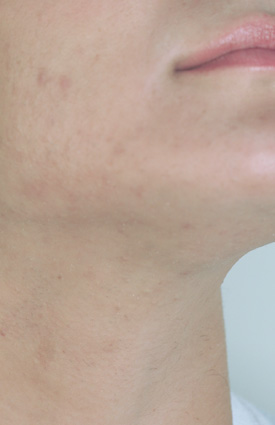
* Laser Hair Removal Before and After Pictures
Q-switched lasers are very precise and effective in removing sun (liver, age) spots. The question as to how many laser treatments does it usually require to remove age spots is contingent on whether or not the patient is able and/or willing to have what is referred to as “social downtime.” This term refers to a change in one’s appearance that may hinder them from wanting to return to their usual activities like work or social occasions and can involve light bruising or a dramatic darkening and flaking off of the age spots. In addition to the question of social downtime, the patient’s skin type is extremely important when determining how aggressive laser treatments should be in treating sun or age spots.
For those patients who prefer more aggressive laser treatments (with quicker results), most sun or age spots may be either permanently resolved or dramatically faded in as little as 2-3 treatments. For those that are unable to have more aggressive treatments, sun or age spots will gradually resolve in approximately 6-8 treatments.


Age spot removal before and after pictures
Do you have a wart that keeps coming back no matter what you do? If you’re losing the battle using wart treatments like liquid nitrogen freezing, burning and acid treatments. We want to tell you about a secret weapon—laser treatments!
Warts are caused by a virus. Normally, your immune system is able to control viruses. But for some reason, many people like you struggle to get rid of warts. They just seem to fly under the radar, getting bigger, spreading to other areas and causing pain and embarrassment.
Lasers assist your body’s immune system in keeping warts at bay. It’s believed that laser work by using light and heat to kill the wart virus, but no one is exactly sure how. We do know that laser treatments are a safe and effective alternative to traditional treatments. But for reasons related to cost. We encourage patients that have not tried traditional treatments to attempt to get rid of warts using those first before trying lasers. Take a look at the photos below to see how effectively laser treatment worked to get rid of a very large and painful plantar wart. These results were obtained after several laser treatments.
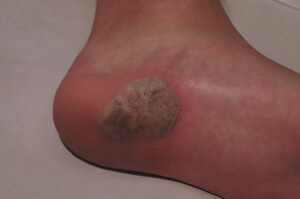
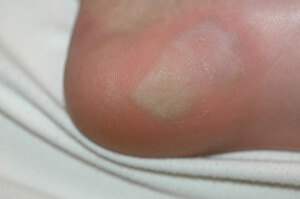
The answer is that no one is sure. If you have keloids, then we do know that there’s a good probability that someone else in your family does too because there seems to be a genetic link involved. Maybe you had surgery, suffered an injury or some other sort of trauma that left you with a keloid scar? Interestingly, keloids can also form from little things like vaccinations, acne, piercings and even bug bites. Rarely, spontaneous keloids can appear on your skin for no reason at all!
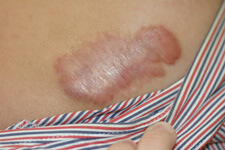
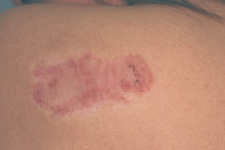
Scar removal before and after photos
Remember, keloid scars are larger than the original wound, injury or other skin trauma that was there in the first place. If you simply have a firm, raised scar that’s still within the original borders of the injury, that’s not a keloid. And if you have a keloid, it’s important to think about your increased risk and discuss this with your doctor when planning surgeries or other procedures that could potentially make more. We do know that keloids are much more common in those with darker skin as opposed to lighter-skinned individuals.
There is no one, perfect treatment for keloid scars. Since each scar is a bit different, you will need a thorough evaluation to determine which one might work best for you. What worked for a friend or family member may not be your best bet! But know that there are effective treatments out there. The key is finding a practice and practitioner who specializes in the treatment of keloids.

